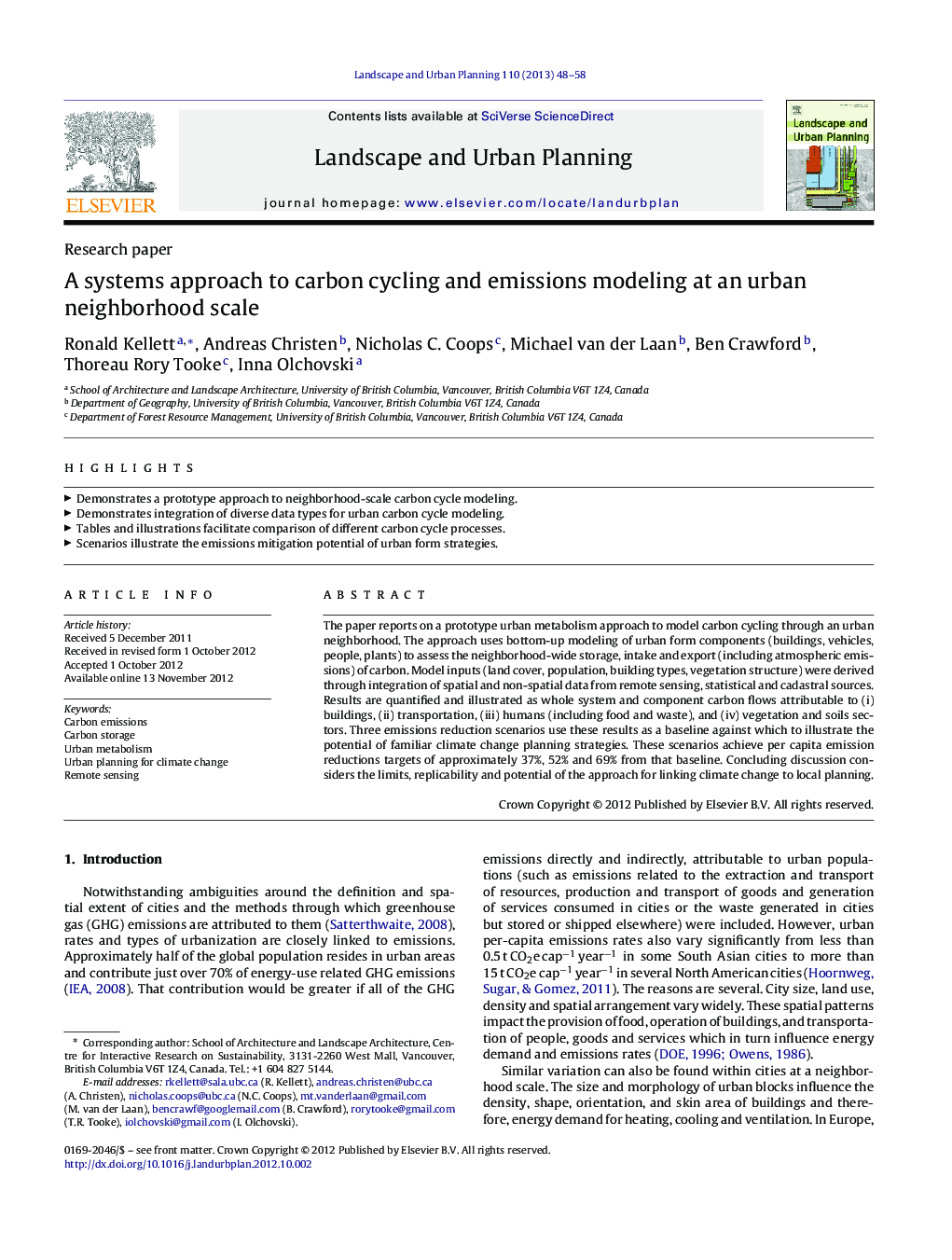| Article ID | Journal | Published Year | Pages | File Type |
|---|---|---|---|---|
| 1049262 | Landscape and Urban Planning | 2013 | 11 Pages |
The paper reports on a prototype urban metabolism approach to model carbon cycling through an urban neighborhood. The approach uses bottom-up modeling of urban form components (buildings, vehicles, people, plants) to assess the neighborhood-wide storage, intake and export (including atmospheric emissions) of carbon. Model inputs (land cover, population, building types, vegetation structure) were derived through integration of spatial and non-spatial data from remote sensing, statistical and cadastral sources. Results are quantified and illustrated as whole system and component carbon flows attributable to (i) buildings, (ii) transportation, (iii) humans (including food and waste), and (iv) vegetation and soils sectors. Three emissions reduction scenarios use these results as a baseline against which to illustrate the potential of familiar climate change planning strategies. These scenarios achieve per capita emission reductions targets of approximately 37%, 52% and 69% from that baseline. Concluding discussion considers the limits, replicability and potential of the approach for linking climate change to local planning.
► Demonstrates a prototype approach to neighborhood-scale carbon cycle modeling. ► Demonstrates integration of diverse data types for urban carbon cycle modeling. ► Tables and illustrations facilitate comparison of different carbon cycle processes. ► Scenarios illustrate the emissions mitigation potential of urban form strategies.
